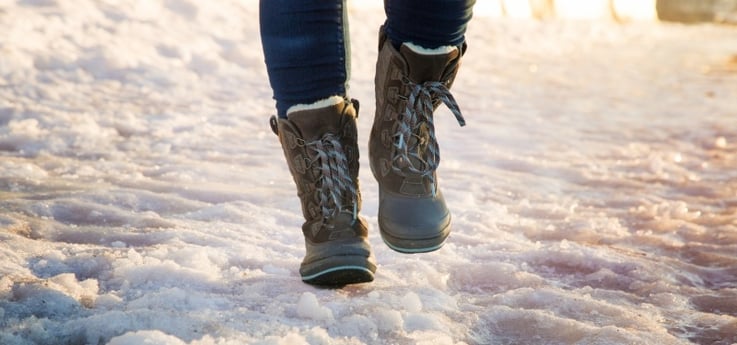
Winter weather can impact all aspects of our operations, from staff call-ins, to power outages, delayed food and service deliveries, and more. But what about falls? I’m not referring to resident falls, because hopefully when there is inclement weather you aren’t allowing your residents to be outdoors! I am referring to staff and visitor falls. This may shock you, but visitors and staff assume that your parking lot and walkways are going to be safe when they visit a loved one or punch in for their shift.
There's an old adage that “the first dog bite is free,” but the first fall is far from free! Visitor falls are a general liability issue and can be very costly—especially if there's a significant injury.
Preventing Visitor and Staff Falls
So how do we manage these unpredictable events while maintaining some level of safety in our communities? To start, have a policy and procedure in place that reflects the goal of keeping walkways and parking lots clear of ice and snow. Don't be too prescriptive on timeframes, though, as weather is unpredictable!
For example, if it is a continuous snow event, there is no way to keep walkways completely clear at any given point in time. The same is true for ice storms—as the freezing rain is falling, there is increased risk of falls. But it would be all but impossible to keep all ice from accumulating on walkways.
Many communities in the Snow Belt keep large, plastic garbage bins filled with salt and scoops at entrances of the center. With appropriate signage indicating “Use Me,” visitors and staff can feel free to spread some salt if they notice ice accumulating on walkways.
How about that less-than-dependable snow removal company? Get rid of them! There is no latitude for a lack of dependability, especially if you're on notice that the parking lots aren't being maintained per expectations. There are many options for snow removal, so don’t settle for less than what you need.
What to Do When a Fall Occurs
What if a fall does occur in your parking lot and a visitor sustains significant injuries? Don’t panic—however, your investigation needs to begin immediately. The first thing you want to document is the weather conditions for the 24 hours prior to the event and at the time of the event. This helps determine if the ice or snow involved with the slip and fall was predictable or not. Remember, if it's a continuous storm, you may have an argument that the walkways were as well maintained as possible for the weather conditions. The remainder of your investigation should flow like any other investigation, including interviewing witnesses who were present.
This may also be a good time to review your current Disaster Preparedness manual to determine if the current policies reflect your actual practice. Policies are often used to defend a claim, so it's critical that these be current and that staff are compliant. If your policy was not followed per expectations, initiate your progressive disciplinary process and document it in the personnel file.
Your QA Reader team hopes you enjoy the winter months and don't experience any fall events on your property. But if you do, reach out to our team for assistance.

